Sheely's Round Barn
Introduction
Text-to-speech Audio
Images
The round barn now hosts an amazing farmer's market open to the public. (Photo courtesy of Bubba’s Garage Blog)
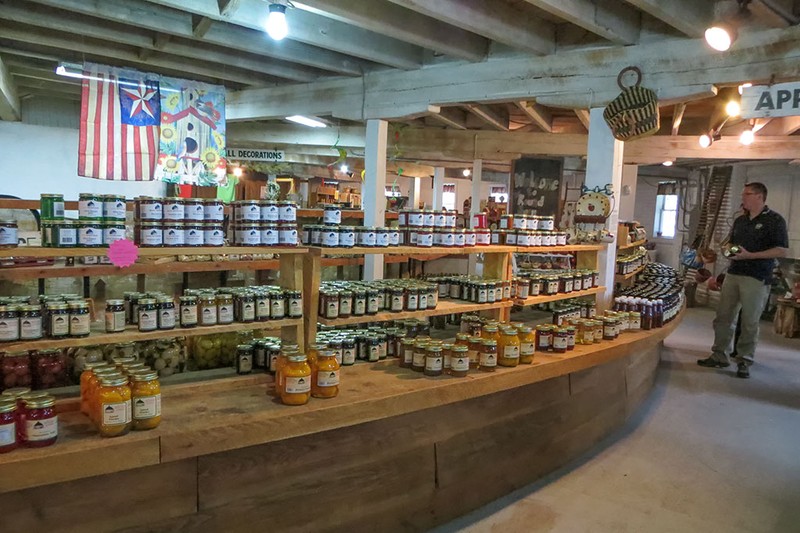
The upstairs of the barn has become a popular wedding venue. (Photo courtesy of Bubba’s Garage Blog)
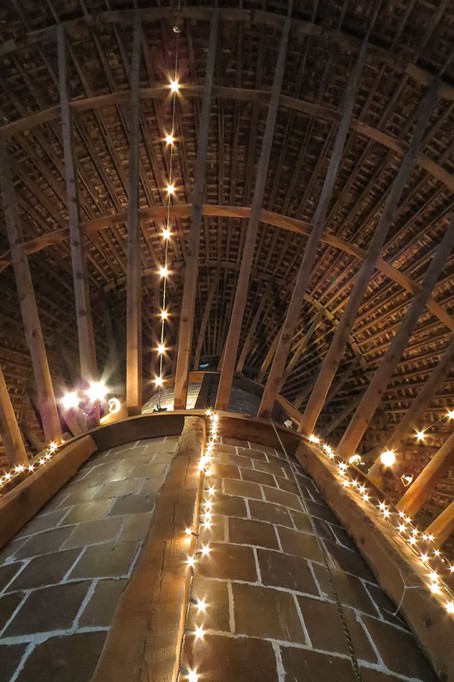
The farm was originally an apple orchard. (Photo courtesy of Bubba’s Garage Blog)
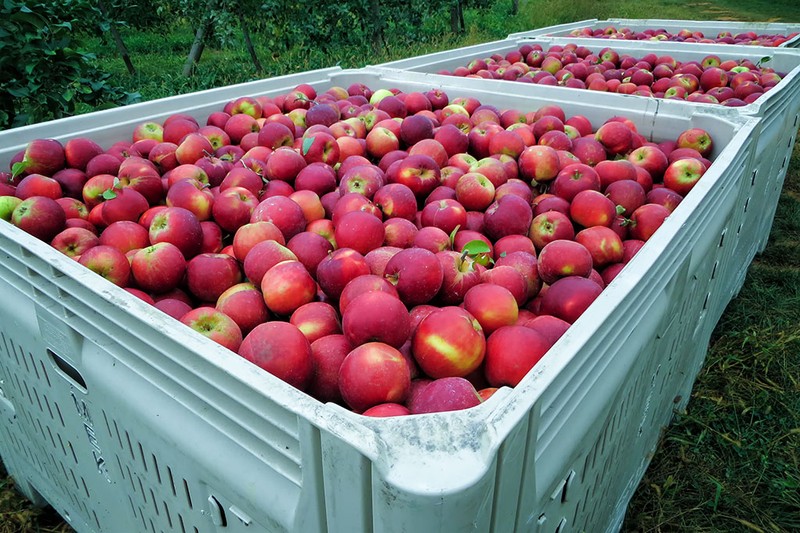
The barn is 282 feet around and the diameter of the barn is close to 90 feet. The silo in the center of the barn is 60 feet high and 12 feet wide. (Photo courtesy of Lincoln Highway Experience)
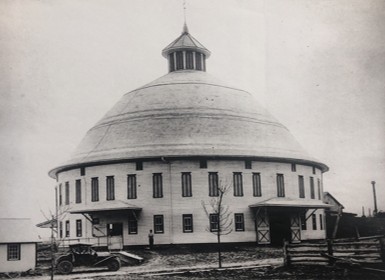
The barn originally had 50 stalls for cattle and 16 stalls for mules or horses. (Photo courtesy of Lincoln Highway Experience)
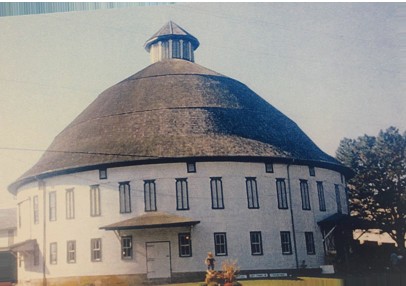
The round barn today is the perfect place to spend an afternoon to browse the shop and see the barn animals. (Roadside Wonders)
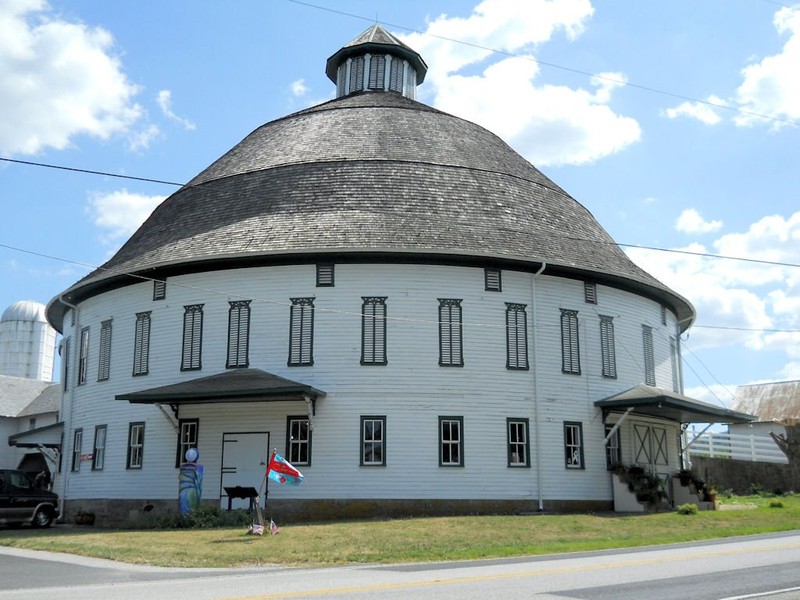
Backstory and Context
Text-to-speech Audio
Most truly round barns in the US were built between 1889 and 1936. Many of those barns are not standing today. Round barns started as octagons and eventually they moved to be polygons. Finally, round barns came to be. The idea of round barns was first introduced by Orson Fowler in 1848 in A Home For All: Of the Gravel Wall and Octagon Mode of Building. The book contained his thoughts on the use of different shapes of barns. It was an old belief of farmers that the round barns would also keep the devil from hiding in corners, or cornering the farmers themselves. Eventually farmers saw even more value in building round barns.6
Many round barns are now listed on the National Register of Historic Places. Even though truly round barns weren’t popular until the 1900’s, the first one was built in 1826 in Hancock Shaker Village, Massachusetts. The main reason round barns became so popular was to increase efficiency in progressive farming methods. Most round barns were cheaper to build than traditional square barns. In addition, the structural stability of a round barn is better than that of a square barn. Some round barns even had a silo constructed in the center, not only to hold feed, but to provide a labor-saving element to the structure. Animals were often housed on the bottom floor while other supplies were kept on the second floor. Animals commonly kept in these barns were horses, cows, pigs, and goats. The stalls for the animals lined the perimeter of the first floor to save space in the barn.6
The round barn in Biglerville, Pennsylvania was completed in November of 1914. Biglerville is located just outside Gettysburg. The barn was built by the Noah Sheely family after their conventional barn was lost in a fire. Noah’s son, Daniel, had seen a round barn in Hershey, Pennsylvania. He then convinced his family that a round barn was best suited for them at that time. Morris Rhodes was hired as their architect for the new barn. The silo was built first and the barn was built surrounding it. The silo stands 60 feet high and 12 feet wide. Hundreds of people from around the small town gathered to see the new barn being built. 250 barrels of cement were used for the first floor. The wood used for the barn was all from multiple different kinds of trees from the farm’s land. The barn is 282 feet around and the diameter of the barn is close to 90 feet. The barn originally had 50 stalls for cattle and 16 stalls for mules or horses.2
Barns built around this time period are often not properly taken care of, therefore there aren’t many round barns left. Maintenance of these structures needs to be taken seriously in order to keep the structures standing. The main cause of these buildings deteriorating is actually moisture. Old barns should be regularly checked for roof leaks, broken windows, and anywhere else water may be able to get into. Bugs are also a huge problem for these old barns. Termites, carpenter ants, and beetles all ruin the structures. Checking for insects regularly and taking steps to prevent infestation is a must. Precautions should be taken to prevent these two things from destroying historic barns.5
Now the barn houses a farmer’s market where the produce grown on the farm is sold. Peaches, apples, and other fruits and veggies are all grown and sold on the property. The barn can also be rented out as a unique wedding or event venue.2 Because of the barn’s age, and the fact that it is still in use, many conservation efforts have to be applied in order to make sure the barn stays in good condition to function as a farmer’s market and a wedding venue. Windows, roofing, and siding have been replaced to avoid water damage. Regular inspection is done to ensure that water is in fact staying outside of the barn. Insects are also checked and sprayed for regularly to avoid the barn from decaying any farther.
As impactful as agriculture is and has been to the growth of the entire state, preserving any barns around the state helps to show the deep seeded roots Pennsylvania has in agriculture. Keeping the history of the area alive is going to help future generations to appreciate and learn from the past. Also being able to buy fruits and vegetables from a reputable facility that’s been growing crops since 1914 gives most people a nice peace of mind knowing that their produce is going to be fresh and top quality. Having the barn double as a wedding venue also helps new families to have a great experience on such an important day.
Sources
2. The Historic Round Barn. . Accessed April 08, 2019. roundbarn.farm. Official Website
3. Pennsylvania Agriculture. Farm Flavor. . Accessed March 18, 2019. https://www.farmflavor.com/pennsylvania-agriculture/.
4. Lennon, Beth. The Round Barn in Biglerville, Pennsylvania. Saving Places. November 13, 2014. . https://savingplaces.org/stories/retro-roadmap-round-barn-biglerville-pennsylvania#.XK5VsP2Wyih.
5. Auer, Michael J.. Preservation Brief 20: The Preservation of Historic Barns. National Parks Service. . . https://www.nps.gov/tps/how-to-preserve/briefs/20-barns.htm.
6. V., Wendy. The Round Barn. Roadside Wonders. August 26, 2011. Accessed April 15, 2019. http://roadsidewonders.net/broundbarn/.
